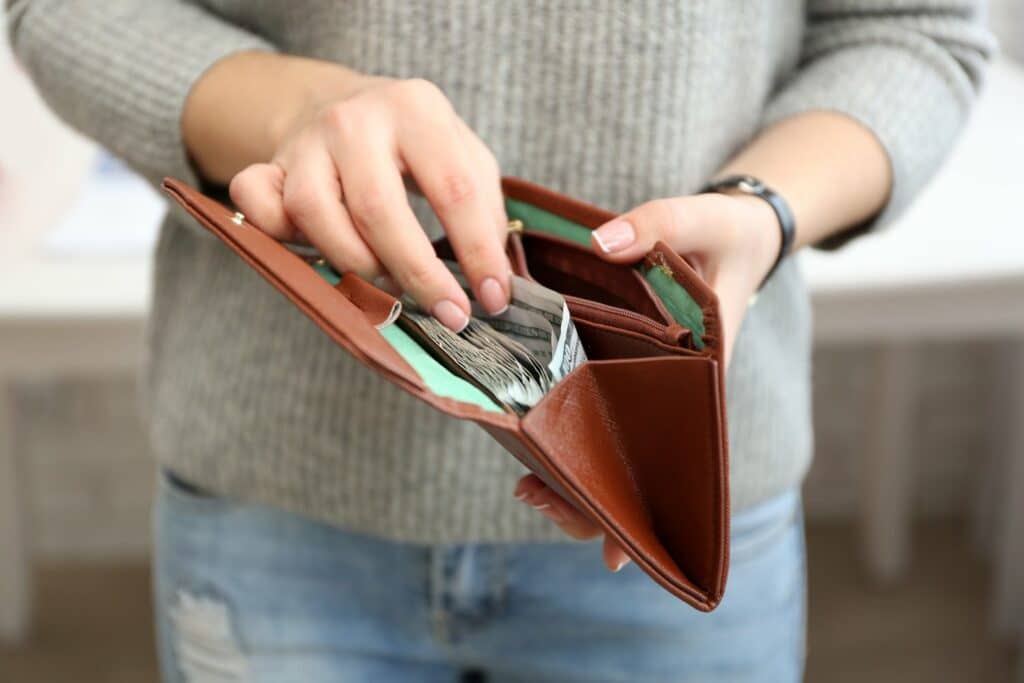How To Go From Credit Card Dependency to Using Cash-Only
For most households struggling with living paycheck to paycheck (and that accounts for roughly six out of ten households on every block in America), moving from complete credit card dependence to the cash-only envelope system sounds like a great idea. However, these same households also know that quitting their credit cards cold turkey would mean that their payments to credit card companies (and to other creditors and accounts) would turn to rubber and begin bouncing higher than the New York City skyline.
If you’re making only minimum payments on our credit cards while using them to finance groceries, gasoline, utilities, insurance, gifts, and more, you’re likely carrying a balance of thousands of dollars from month to month. The average credit card debt per household currently comes in around $6,500. At an average 16.5 percent APR, that means that the average American household is paying around $90 every month just in credit card interest. If that doesn’t seem too bad, consider that such a monthly interest payment equates to over $1,000 every year. What does $1,000 mean to your household? How would you spend $1,000 if someone gave it to you?
Let’s look at some ways we could spend an extra $1,000
-
You could purchase for your family double the number of Christmas gifts the average American household gets each year.
-
You could invest in a mutual fund that earns the annual market return of 9 percent, and if you contributed that $1,000 annually you’d be looking at over $61,000 in twenty years, having only contributed around $20,000.
-
Get a large, high-performance smart TV for the entertainment room.
-
Pay for a top-line premium cable or satellite television channel package for a year.
-
Buy a new, state-of-the-art cell phone with a nice case, screen protector, and earbuds.
-
Go on a short, but relaxing Caribbean cruise for two.
You should never say something like, “It’s just $100 a month. We can afford that.” Instead, mentally equate the dollar amount with something you really want to acquire for that amount.
Now that you have a vision of what you’re missing by paying so much credit card interest each month, how do you get rid of that interest without wreaking havoc on your bank account? The answer involves taking it one step at a time.
The Impracticality of Quitting Credit Cards Cold Turkey
Most people simply cannot quit cold turkey. Unfortunately, that’s what many financial gurus, in their impractical brilliance, fail to mention when they say, “Stop using your credit cards and go cash only.”
No duh, Mr. Guru, but how?!
Once you understand what your income and expenses are each month and have put together a spending plan, you can start converting one or two monthly credit card purchases into cash transactions (by cash, I mean debit, bill pay, actual cash, check, or other direct debit methods of payment). I suggest beginning with the non-set-in-stone expenses, such as gasoline, gifts, entertainment, or, if you’re feeling particularly brave, groceries. First, determine how much you typically spend on the item or activity during the month, then take that amount out of your checking account right after payday (in cash, by writing the check, or by initiating an online bill payment).
That’s it! For month number one, you’ve transferred one or two expenses from your credit card addiction to the cash-only virtual envelope system.
During month number two, since your credit card bill will ask for a smaller minimum payment because you charged less during the previous month, you may now transfer another monthly purchase from the credit card to cash. Don’t forget, though, to pay down the credit card balance by paying more than the minimum payment. Each month, more purchases are transferred from a credit card to the envelope system, and within five or six months, most households will be weaned from using credit cards for regular purchases.
Besides this method, another option is to use unexpected or periodic “windfalls” to switch from the credit card habit to the envelope system. Probably the most common opportunity to do this occurs in mid to late spring when you receive a tax refund (if such a refund comes your way).
Let’s say that you get a $1,000 refund this next year and are mentally and emotionally in a place to switch to the cash-only envelope system. If that’s the case, take half of your refund and use it immediately to make some of the monthly purchases you habitually pay by credit card.
Step by Step From Credit Card Debt to Cash
To go from credit card-dependent to credit-card-free living, follow the steps below in addition to the suggestions mentioned above.
-
From your previous credit card statements, figure out how much money you paid to your credit card companies over the past twelve months.
-
Write down one to three activities you would like to do or items you would like to purchase in the next twelve months and their rough cost (each should equal more or less the amount of Step 1).
-
Commit to self, partner, or best friend to get to a point over the next twelve months where you can begin to save the money from step one rather than sending it to your credit card companies.
It’s a Fact
There are really only three factors in paying down our debts, and they all involve getting more money to go toward our debt’s principal rather than to its interest:
-
Earn more to send a larger payment;
-
Spend less to send a larger payment;
-
Get a lower interest rate to increase the portion of our payment going to the principal.
Typically, only factor #2 involves the self-discipline required for successfully paying down debts. Whether alone or in conjunction with #1 and/or #3, factor #2 almost always needs to be involved in paying off our debts.
What to do, and not to do, when switching from credit card dependency to the cash-only method
-
Don’t quit credit cards cold turkey and without a plan.
-
Don’t simply transfer debt from one card to another (regardless of differences in interest rates) without establishing barriers to your spending.
-
Don’t apply for ANY new credit cards, retail cards, gas cards, or other debts while paying down your current debt.
-
Do identify each week or month which purchase or purchases to switch from credit card to cash.
-
Do commit to quitting by telling family members or those close to you that you’re doing so.
-
Do look ahead to potential income windfalls such as tax refunds and plan to send it, or a large portion of it as a credit card payment.



